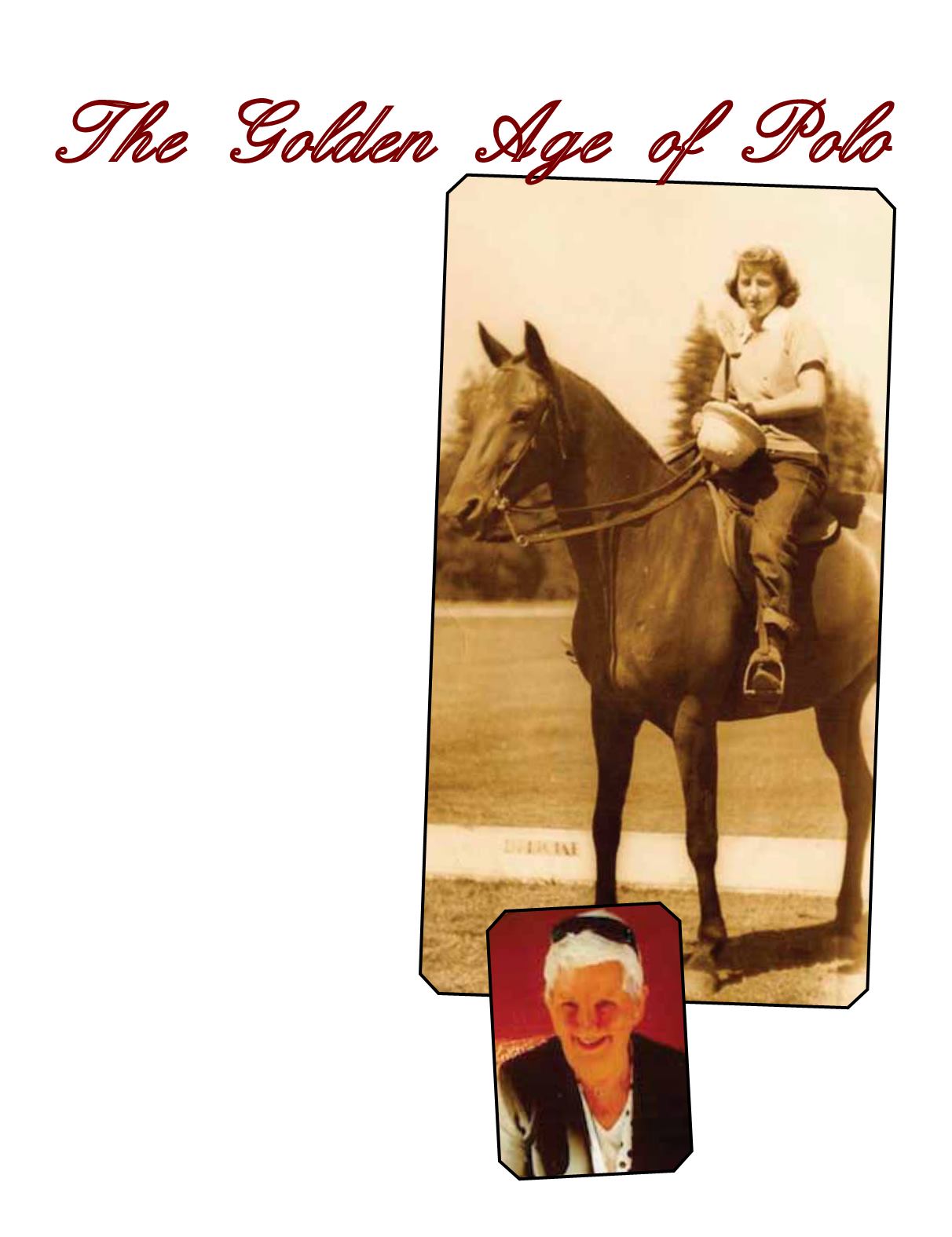
110 SIDELINES OCTOBER 2013
FOR HORSE PEOPLE • ABOUT HORSE PEOPLE
By Lauren R. Giannini
I
magine you are a young girl, born in Hollywood,
California in 1926 when it was still rural. You start
playing polo in 1934 at Riviera Country Club. You move
to Santa Cruz in 1938 and live on the Wheeler’s Ranch
where you get to train horses. You play polo every day and
you get really good. Your best friend and confidante is also
your favorite polo pony, Sleepy, and one of your greatest
training success stories…
That’s what Colleen McInerney-Meagher did. She
was only eight when she started playing polo under the
mentorship of Snowy Baker and continued blazing her
own distinctive trail alongside her equally polo-crazy sister
Elaine. The sisters joined The Pogonip Women’s Polo
Team in Santa Cruz. Elaine was 19. Colleen was only 14,
had a three handicap and played the number two position.
The Pogonip women won seven consecutive national
titles. Although most of those pioneering distaff players
have passed to play celestial chukkers, Colleen is still
full of spunk and drive. Her dedicated efforts to fill in an
enormous blank in American polo history have come to
fruition with her soon-to-be-published book,
Golden Age
of Women’s Polo 1934-1941
.
“Winston Churchill said that a polo handicap is a
passport to the world,” Colleen said. “We were good and
we had the horses. We had great horses – that’s the key
to good polo, great horses. I played every day. I had to
train the horses, stick and ball. If you play every day,
you’d better get good. I had good hands. I never used
whips or spurs. The horses didn’t get trained until they
were five and their legs were strong enough.”
During that golden age, Dorothy Deming Wheeler,
married to a banker, charged literally into the gender-
biased ranks of men’s polo by encouraging and teaching
young women to play the fast-paced game. “The women
were so darn good – some of them were eight-goal
players – and Dorothy got everything going – the Pacific
Women’s Polo Association and then in 1936 she started
the first United States Women’s Polo Association,”
Colleen stated. “Dorothy wrote to men in the USPA for
guidance for her Women’s Association and they said
they didn’t think polo was a women’s game!”
Of course, that only fired up their passion and
determination. The women more than held their own
in practice chukkers against men who were willing to
play on equal terms, but the bitter pill to swallow was
not being recognized for their tournaments and not to
being able to play in USPA mixed teams. “In Wikipedia there is
nothing about the women of my golden era in the history of polo
and that’s why I wrote this story,” emphasized Colleen. “Sue Sally
Hale (1937-2003) was born in California and she played disguised
as a man with a fake moustache for 20 years.”
Sue Sal’s male teammates knew, but they protected her until
someone revealed her true identity. She was playing as a man,
teaching men and women alike to play the game and play it
well. The USPA turned down every application she submitted for
e
Polo
Colleen and Sleepy at the
Pogonip Polo Club polo
field, circa 1940.
Photos courtesy of Colleen
McInerney-Meagher
Colleen today.
The Golden Age of Polo
Continued on page 112


